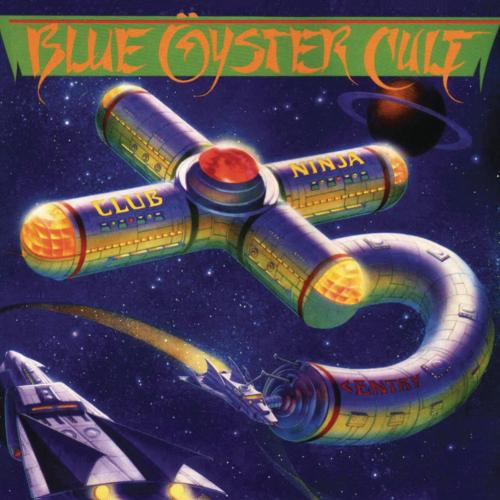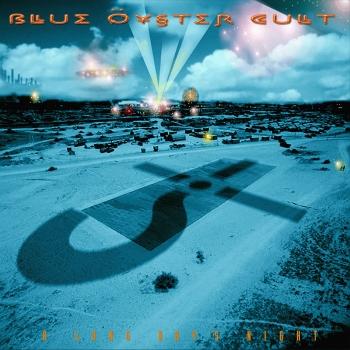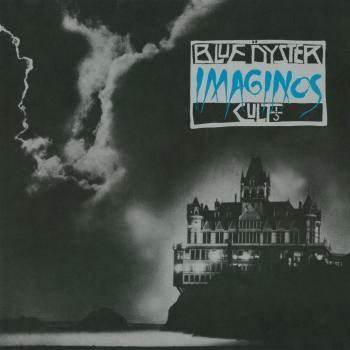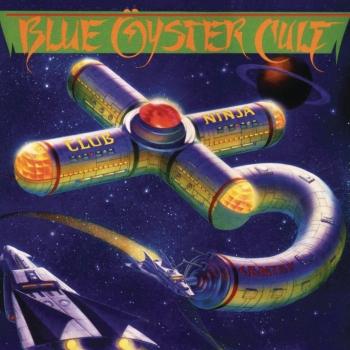
Club Ninja (Remastered) Blue Oyster Cult
Album info
Album-Release:
1985
HRA-Release:
27.09.2021
Album including Album cover
I`m sorry!
Dear HIGHRESAUDIO Visitor,
due to territorial constraints and also different releases dates in each country you currently can`t purchase this album. We are updating our release dates twice a week. So, please feel free to check from time-to-time, if the album is available for your country.
We suggest, that you bookmark the album and use our Short List function.
Thank you for your understanding and patience.
Yours sincerely, HIGHRESAUDIO
- 1 White Flags 04:41
- 2 Dancin' In the Ruins 03:58
- 3 Make Rock Not War 03:55
- 4 Perfect Water 05:28
- 5 Spy in the House of the Night 04:20
- 6 Beat 'Em Up 03:22
- 7 When the War Comes Home 06:01
- 8 Shadow Warrior 05:39
- 9 Madness to the Method 07:25
Info for Club Ninja (Remastered)
Club Ninja is the tenth studio album by American hard rock band Blue Öyster Cult, released December 10, 1985 in the United Kingdom and on February 11, 1986 in the United States. The album was intended as a comeback for the band, whose previous album The Revölution by Night failed to attain Gold status following the success of 1981's Fire of Unknown Origin and 1982's Extraterrestrial Live. Club Ninja sold more than 175,000 copies, falling well short of gold status again, and because of its high cost, Columbia Records executives deemed it a commercial failure.[4] The album was re-issued on compact disc on March 10, 2009, by Sony-owned reissue label American Beat Records, which had also reissued the band's 1988 album, Imaginos.
Club Ninja's first single, "Dancin' in the Ruins", was a minor radio and MTV hit. "When the War Comes" features a brief spoken-word introduction by radio personality Howard Stern, whose cousin was married to guitarist and vocalist Eric Bloom. The lyrics to "Spy in the House of the Night" were written by Richard Meltzer, originally based on his poem "Out of Smokes", which was published in his 1999 book Holes. The album was the band's last studio album with bassist Joe Bouchard.
Club Ninja was the first BÖC studio album not to feature keyboardist Allen Lanier, and the only one until 2020's The Symbol Remains. Lanier was replaced temporarily by Tommy Zvoncheck, who'd previously been keyboardist for Aldo Nova's live band, for a Japanese tour by Public Image Ltd. and had already contributed to the initial recordings of Blue Öyster Cult's 1988 concept album Imaginos. The album also features new drummer Jimmy Wilcox, formerly of Rick Derringer and Scandal, who replaced Rick Downey. Wilcox remained with the band until 1987.
"Club Ninja was not the disaster it's sometimes made out to be. Indeed, Blue Oyster Cult followed a trend of 70s bands trying to update their sound to stay relevant. The gold standard for this approach will always be ZZ Top's Eliminator, which worked only due to the rarest of alchemy. Instead, this represented the terminus point of BOC's slide towards anonymity - where once they were the 'red and the black', now they were the dull and the bland. At least this didn't represent the end of their story..."
Blue Öyster Cult
Digitally remastered
Blue Öyster Cult
Spanning three decades, Blue Öyster Cult has a long and storied history. The band got its start in the late ’60s on Long Island, New York, as the Soft White Underbelly, but each member had been involved in bands previously in high school and college, before ending up in the “right place at the right time” to create the beginnings of Blue Öyster Cult.
The threads that eventually wove together to create Blue Öyster Cult got their start in upstate New York.
Long Island native Donald Roeser and Albert Bouchard (of Watertown, New York) met at Clarkson College, in Potsdam, NY. The two were introduced by a mutual friend, Bruce Abbott (who later co-authored “Golden Age of Leather” with Donald). With Abbott and two other friends, they formed “The Disciples” and played college parties and local beer halls. The next year, the band reformed and played the same circuits as “Travesty” (named after the Blues Project album). Through all this, their studies fell by the wayside, and both Albert and Donald decided to quit college to concentrate on playing music full-time.
Eventually “Travesty” broke up, Donald and Albert took seperate paths for a while. Donald went back to Long Island, and Albert took a musical opportunity in Chicago. After moving there, though, the band fizzled, and Albert returned to NY and joined Donald. In the meantime, Donald had been jamming with local musicians, and had met a person that would become very influential in their future: Sandy Pearlman.
Sandy Pearlman became interested in rock music around the time of the British Invasion, and was a pioneering voice of rock criticism, opening a new field for creative writers like Lester Bangs. Both Pearlman and his friend Richard Meltzer were contributors for seminal magazine “Crawdaddy!,” the first magazine that dedicated itself to analysis of rock music and its culture.
Allen Lanier came into the fold by way of guitarist John Wiesenthal. Allen had accepted employment at a film company at which Wiesenthal was also an employee. After becoming acquainted, Wiesenthal invited Allen out to Long Island to meet and jam with the loose group of musicians he played with, and Allen began to regularly jam with them.
An old house near Stony Brook College became ground zero for the formative band, and casual jams with whomever happened to be hanging around began to turn into rehearsals with a core band, which included Wiesenthal, Donald, Albert, Allen and Andrew Winters, a school friend of Donald. It was 1967.
Pearlman (along with Meltzer and Wiesenthal) had been a student at Stony Brook, and was becoming increasingly involved in the music scene. When he heard the formative combo, he instantly recognized the talent at work. He had an idea for a band, and thought that this group of musicians had the chops to put that idea into play. The musicians saw that Pearlman’s contacts and stature in the local (and increasingly national) scene could help them spawn a career as well, and an alliance was formed.
This album contains no booklet.






















